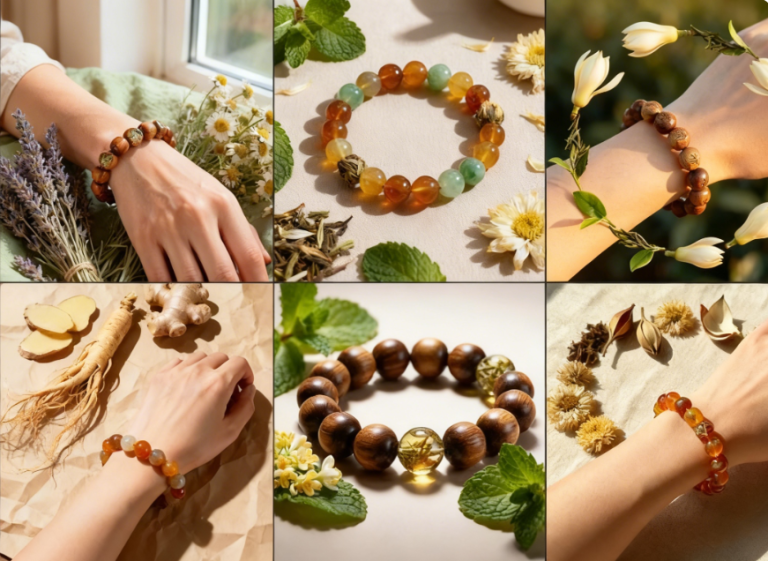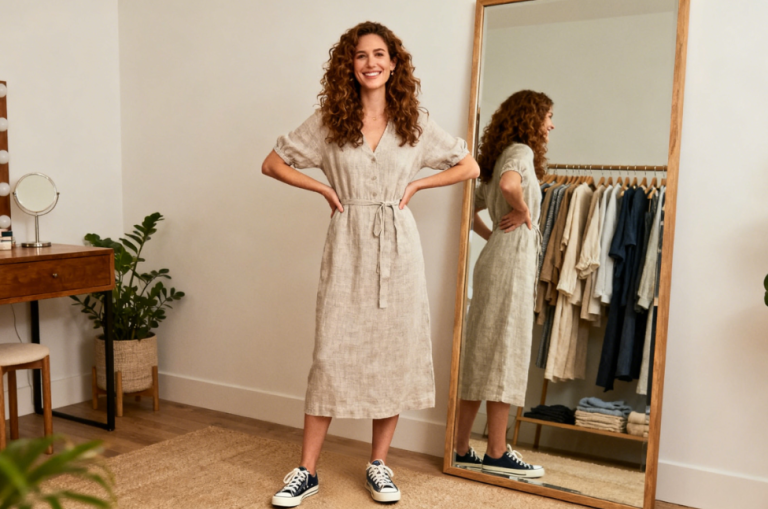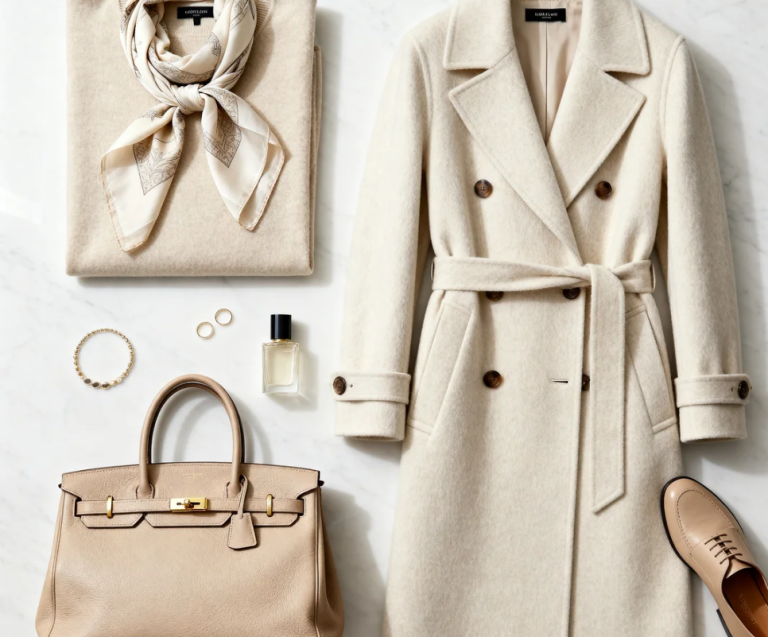
Whether you’re picking out a perfectly tailored blazer for London’s business scene 👔, packing a breezy linen dress for your Greek island getaway 👗, or layering a durable jacket for your Colorado hiking trip 🥾 — few things feel better than refreshing your wardrobe with a piece that truly elevates your look.
But as we stroll through shopping streets from Paris to New York, it’s easy to forget the hidden cost of our clothing choices. The fashion industry is one of the largest global polluters, responsible for about 10% of worldwide carbon emissions, severe water pollution, and widespread labor exploitation.
The good news? You don’t need to overhaul your entire wardrobe overnight. 🌱
With just a few mindful swaps, you can reduce your fashion footprint while staying effortlessly stylish. Below are 10 of the best and easiest ways to practice green fashion — no compromise on aesthetics required.
💡 What Exactly Is Green Fashion?
Green fashion — often called eco-fashion or sustainable style — goes far beyond wearing earthy tones or niche designer brands. It’s about choosing clothing that respects both the planet and the people who make it.
As Western consumers, we have incredible access to choice — but that also means we hold power. By paying attention to how our clothes are made, what materials they use, and how long they last, we can reshape the industry from the ground up.
It might mean scoring a vintage Chanel scarf in Milan 👜, buying a locally made organic cotton tee in Berlin 👕, or simply repairing your favorite jeans instead of tossing them 👖.
These small, intentional actions add up — and over time, they’ll build a wardrobe that’s more personal, more ethical, and far more stylish than any fast-fashion haul.

🌍 Why Sustainable Fashion Matters to Western Consumers
We’re lucky to live in a world of abundance, but abundance comes with responsibility.
Driven by social media trends and low-cost temptations, fast fashion fuels a culture of “buy, wear once, discard.”
📉 In the U.S., more than 92 million tons of textiles end up in landfills each year.
🇪🇺 In Europe, despite new circular-economy policies, fast fashion still makes up nearly 20% of clothing consumption.
What’s worse — the industry often relies on underpaid factory workers to keep prices artificially low. That $5 T-shirt or $15 pair of jeans? Someone, somewhere, paid the real cost.
By choosing green fashion, you’re not just cutting emissions — you’re voting for fair wages, safe working conditions, and a system that values people as much as profit. That’s what makes sustainable style truly empowering 💚.
👗 Top 10 Practical Ways to Go Green With Your Wardrobe
1️⃣ Buy Second-Hand or Vintage ♻️
Thrift shopping isn’t just for college students — it’s the ultimate sustainable fashion move.
From Amsterdam to Portland, vintage stores and charity shops (like Oxfam in the UK or Goodwill in the US) are treasure troves of timeless finds.
A 1970s silk blouse from a Paris flea market or a vintage Levi’s denim jacket from Brooklyn? Unique, eco-friendly, and full of character.
💡 Tip: Prefer online? Try Vinted (Europe) or Poshmark (US) for second-hand deals near you.
2️⃣ Invest in High-Quality Wardrobe Basics 👕
Fast fashion thrives on micro-trends. Instead, spend wisely on classic, durable staples — pieces you’ll actually love for years.
Think:
🇵🇹 Merino wool sweaters from a Portuguese family brand,
🇮🇹 Italian-made linen shirts, or
🇺🇸 Organic cotton tees and canvas totes from California.
They may cost more upfront, but over time, they save you money and reduce waste.
3️⃣ Choose Better Fabrics 🌾
Not all textiles are created equal. Make sure your next buy uses eco-friendly materials such as:
- Organic Cotton 🌱 (no toxic pesticides)
- Linen 🌾 (20× less water than cotton)
- Hemp 🌿 (fast-growing and drought-resistant)
- Tencel / Lyocell 🌳 (from renewable wood pulp)
✅ Brands like Patagonia (US) and Armedangels (Germany) are transparent about sourcing — always check the label before you buy.
4️⃣ Skip Cheap Imitations 🚫
Those $30 “designer-dupe” dresses from Zara, H&M, or Shein may look tempting, but they’re made from low-grade synthetics and won’t last.
Instead, save for the original (if it meets ethical standards) or find a vintage alternative. A retro silk scarf from a London market will always outshine a fast-fashion knockoff.
5️⃣ Repair Before You Replace 🧵
Loose seams, missing buttons, or faded colors don’t mean the end. Across Europe, repair cafés and tailors are making clothing care cool again.
👞 Even brands like Dr. Martens now offer repair services.
Keeping your clothes in circulation longer is one of the cheapest and most effective forms of sustainability.
6️⃣ Rent for Special Occasions 👗
Weddings, parties, or vacations often tempt us to buy something new — and wear it once.
Instead, rent high-end pieces through:
- 🇺🇸 Rent the Runway (US)
- 🇪🇺 MyWardrobeHQ (Europe)
Last year, I rented a vegan-silk gown from a Parisian label — it looked stunning, drew endless compliments, and left zero textile waste. 🌟

7️⃣ Support Local Sustainable Brands 🌍
Choose independent, ethical designers near you instead of global chains.
Some favorites:
- 🇸🇪 Asket – timeless minimalist staples
- 🇺🇸 Reformation – eco-luxury dresses with transparent “RefScale” carbon data
- 🇮🇹 Brunello Cucinelli – champion of “humanistic capitalism”
Buying local reduces shipping emissions and supports small businesses in your community ❤️.
8️⃣ Wash Smart 💧
Sustainability doesn’t end at checkout.
✅ Use cold water (saves 90% energy)
✅ Try a Guppyfriend filter bag to catch microplastics
✅ Line-dry whenever possible
✅ Avoid toxic dry-cleaning chemicals
🌞 In sunny climates, air-drying is easy;
🌧️ In rainy cities like London or Seattle, use an indoor drying rack.
9️⃣ Swap Clothes With Friends 👯♀️
Wardrobe swaps are fun, free, and great for the planet!
From Copenhagen to New York, local swap events are trending.
Last month in Berlin, I traded an unworn winter coat for a floral summer dress — saving money and giving both garments a second life.
🔟 Stay Informed & Speak Up 📣
Sustainable fashion is a movement — your voice matters.
Follow eco-fashion advocates like Emma Watson or Venetia La Manna, and don’t hesitate to email your favorite brands asking about their sustainability policies.
Support new regulations like the EU’s proposed Right to Repair law — which requires brands to make clothing easier to fix. Every message helps push the industry forward.
🌸 Final Thoughts
Green fashion isn’t about perfection — it’s about intentional progress.
Each mindful choice — whether it’s thrifting, mending, or supporting local brands — makes a real difference.
And the reward? A wardrobe that reflects your values, your individuality, and your love for the planet 🌍.
✨ Because true style never costs the Earth.


